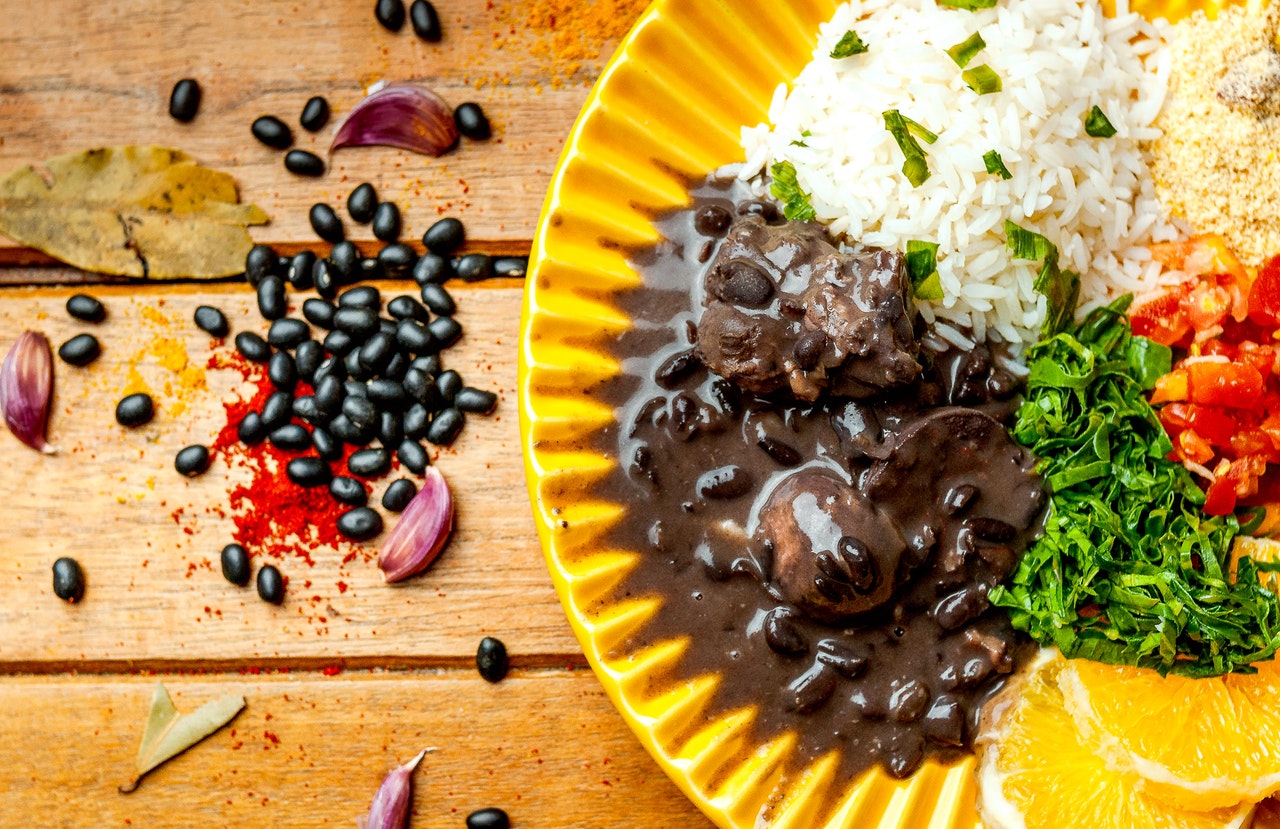When we think of the Caribbean, exotic landscapes and colors come to mind. This is translated into a rich variety of dishes, still largely unknown to most of us. Caribbean cuisine is probably less widespread than African cuisine or Amerindian cuisine, let alone European. This is because it takes elements from these three traditions and many more. This blend was enhanced by natives who have created flavors unique to the region and is characterized mostly by the presence of beans and rice. To start approaching these flavors, you may start trying this easy red beans and rice recipe.
On a plane to Dominican Republic
To the east of Puerto Rico and the west of Haiti, we find the house of Santo Domingo, the city which was considered two years in a row to be the Capital of the Caribbean Gastronomic Culture. We could describe the Dominican Republic in many ways, but the best way to get to know it is tasting its food. After all, the path to a man’s heart is through his stomach, right?
Let yourself be amazed by the culinary wonders it holds: mangú, sancocho, casabe —the list of dishes could go on and on. In this country, lunch is the protagonist and breakfast follows closely behind. Bananas are their main export, and can be found in main courses and desserts, both cold and warm dishes. In the Dominican Republic, there is a place for the spicy and for the sweet, for the tropical and for stew. No flavor is left behind.
This all sounds great, but we need a place to start. Below, you can find a meatless dish for you to fall in love with Dominican cuisine at first bite. Ready for a delicious meal?
First stop: Moro de Habichuelas
Or simply red beans and rice with a touch of magic. If you ever travel to the Dominican Republic, you will find this dish in family gatherings or basically everywhere during the holidays. There must be a reason for it!
Ingredients (6 servings)
- 4 cups of rice.
- 2 cups of boiled red beans (don’t throw away the cooking water!).
- 5 tbsp olive oil.
- 1/2 onion, chopped.
- 1/8 cups of chopped pitted olives.
- 1/8 cup of capers.
- 1/2 tsp garlic, crushed.
- 1 tsp thyme.
- 1/4 cups of diced green peppers.
- 1 tsp cilantro, finely chopped.
- 1/4 cups of celery, sliced and chopped.
- A pinch of oregano.
- Salt, to taste.
- 2 tbsp tomato paste.
- 5 cups of water (cooking liquid, or vegetable both).
If you want to add an extra flavor to it, you may add chicken bouillon to your list of ingredients. Also, 1 cup of coconut milk (unsweetened) instead of water or cooking liquid will give the dish a particular touch of flavor.
Preparation
- Heat half of the oil in a heavy-bottomed cast-iron pot over medium heat. Sauté the onion, olives, capers, garlic, thyme, peppers, cilantro, celery, oregano and salt. At this stage, you would add the chicken bouillon if using. Cook for about 3 minutes.
- Wait for the vegetables to soften, then pour the tomato paste stirring very well until everything is mixed.
- Add the beans while stirring to combine.
- Add the water or cooking liquid and bring it to a boil. Taste the water and add salt to taste, then add the rice. Stir regularly to prevent it from burning on the bottom.
- Once all the water has evaporated, cover the pot and let it simmer over very low heat for 15 minutes.
- Uncover, stir the rice, add the rest of the oil and put the lid back. Simmer for another 5 minutes.
- Try the rice. It must be al dente, i.e.: soft at the palate but slightly firm inside. If necessary, cover and leave another 5 minutes on very low heat.
- Remove from the heat and serve.
Helpful tips
- Soaking the beans overnight will shorten the cooking time. Don’t use the same water to cook them, drain it first and thoroughly rinse the beans!
- This is a versatile dish. You may use fava beans, white beans, black beans, etcetera. However, bear in mind that the genuine Dominican Moro is made with red beans or, alternatively, pinto beans.
You may have this as a meatless main dish, but in the Dominican Republic this is usually a side dish paired with beef picadillo stew or chicken stew (or any other type of stew meat).
Photo by Dayvison de Oliveira Silva from Pexels










